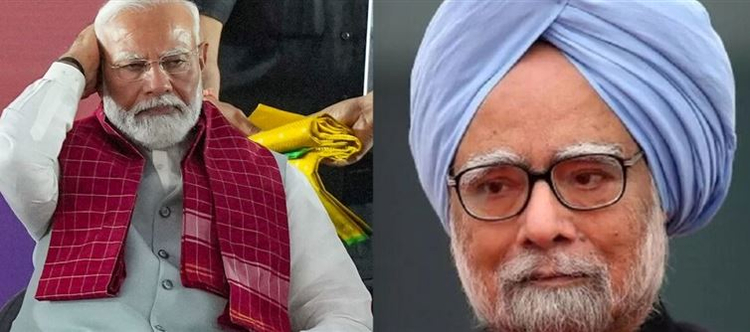
His government also launched the mahatma gandhi National Rural Employment Guarantee Act (MGNREGA), which provided employment opportunities to millions in rural India. Additionally, the Right to education (RTE) Act ensured free and compulsory education for children, contributing to long-term human development.
His leadership in the Indo-US Nuclear Agreement enhanced India’s global energy security, while the National Food Security Act aimed to eliminate hunger by providing subsidized food to the poor. These policies reflected an effort to build a more inclusive and economically strong India.
On the other hand, narendra Modi’s tenure has been marked by a focus on nationalism, security, and political restructuring, often sparking controversy. The citizenship amendment act (CAA) altered India’s approach to citizenship based on religion, leading to nationwide protests. The abrogation of article 370 revoked Jammu and Kashmir’s special status, a move seen by some as integration and by others as suppression.
The Unlawful Activities (Prevention) Act (UAPA) was strengthened, allowing the government to declare individuals as terrorists without trial, raising concerns over civil liberties. The introduction of farm laws, later repealed after widespread protests, was an example of policy decisions that lacked sufficient public consensus. Additionally, the triple talaq Act criminalized instant divorce in the Muslim community, a move viewed as both reformist and politically motivated.
The fundamental difference between the two administrations lies in their priorities. While manmohan Singh’s policies were aimed at economic reforms, education, and welfare, Modi’s policies have largely centered around national security, identity politics, and institutional restructuring.
Singh’s tenure was marked by globalization and economic liberalization, whereas Modi’s tenure has been characterized by a shift toward protectionism and centralized governance. While some of Modi’s policies have aimed at long-term structural changes, their execution has often led to polarization and unrest, contrasting sharply with the consensus-driven governance approach of Singh’s era.




 click and follow Indiaherald WhatsApp channel
click and follow Indiaherald WhatsApp channel